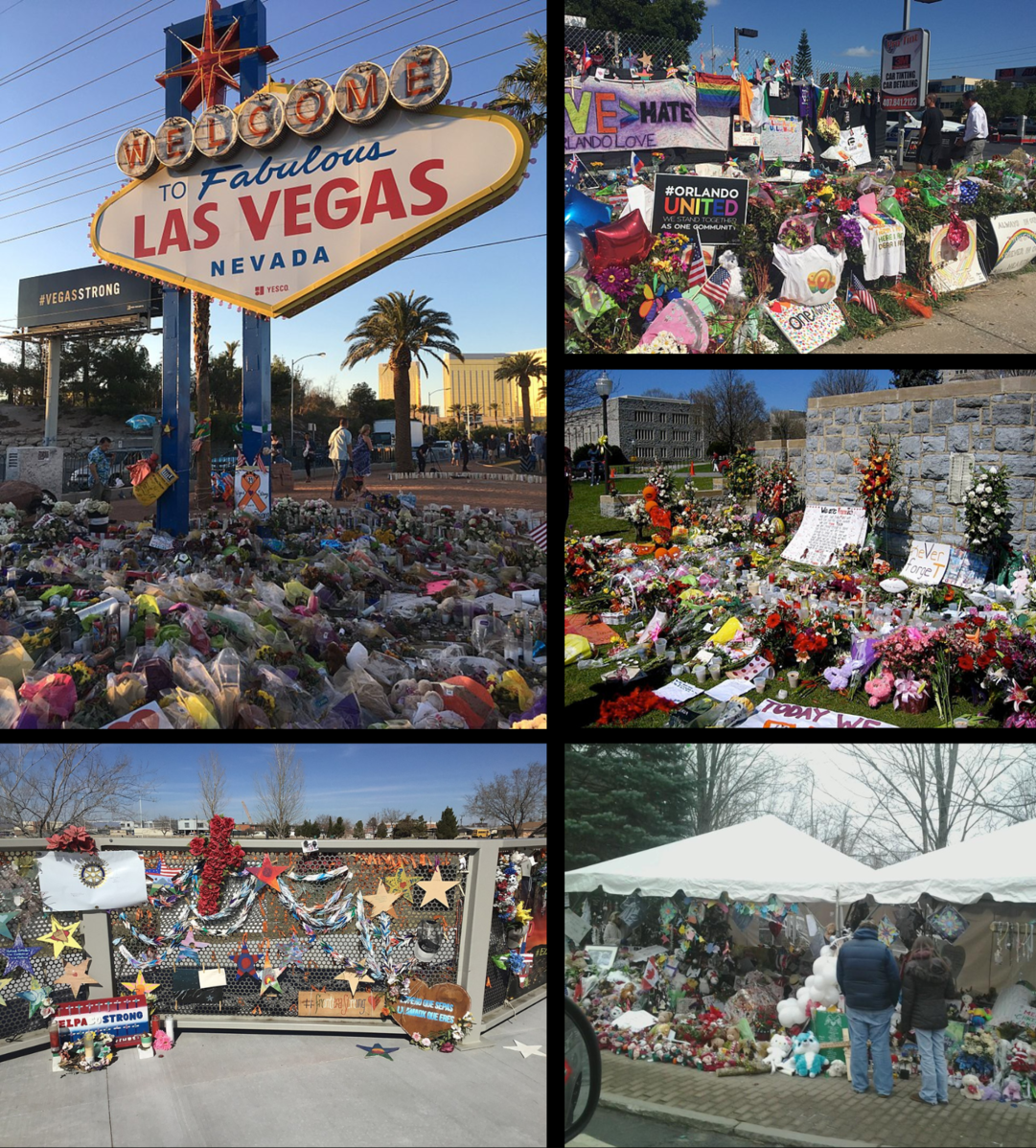10.1 Chapter Overview and Learning Objectives
10.1.1 Learning Objectives
- Identify the different types of mass murders and the factors that distinguish them from other violent crimes.
- Describe different characteristics of people who carry out mass murders or terrorist acts.
- Explain the definitions of terrorism and the goals of terrorist organizations.
- Identify various right wing extremist groups and their ideology.
- Identify various left wing extremist groups and their ideology.
- Evaluate law enforcement methods of preventing mass murder and terrorism.
10.1.2 True Crime Stories: Mass Shootings in America

Figure 10.1 Montage of some of the deadliest mass shootings in the United States. Clockwise from top left: The 2017 Las Vegas Shooting, the 2016 Orlando nightclub shooting, the 2007 Virginia Tech shooting, the 2012 Sandy Hook Elementary School shooting, and the 2019 El Paso shooting.
As we will discuss in this chapter, a mass shooting is defined as an event in which three or more people were shot (not counting the shooter). The Gun Violence Archive, an independent data collection and research group, keeps daily track of all gun violence in the United States dating back to 2014. Specific to mass shootings, 2022 is one of the top three deadliest years since the organization began tracking these data. As of December 21st, 2022, there were 636 mass shootings in this country. In the year 2021, there were a total of 690, and in 2020, there were 610. These last three years are setting a frightening trend, doubling the number of mass shootings for the years 2014-2019 that had an average of 348 per year (GVA, 2022).
The largest mass shooting in terms of number of deaths and injuries in U.S. history occurred in Las Vegas, Nevada on October 1, 2017. Twenty-two thousand fans were in attendance at the Route 91 Harvest Music Festival on the Las Vegas Strip when 64-year-old Stephen Paddock opened fire on the crowd. Paddock fired over 1,000 shots from inside his hotel room, a corner suite on the 32nd floor of the Mandalay Bay Resort and Casino. Over the course of one week leading up to the shooting, he moved an arsenal of firearms in 22 suitcases into two suites. These weapons included 14 AR-15 rifles, 8 AR-10 rifles, one bolt-action rifle, and one revolver. Some of the AR-15 rifles were also equipped with bump stocks that allowed them to fire in rapid succession, and 12 of them had 100-round magazines. On September 30th, he placed a “do not disturb” sign on the doors of both of the suites. For 10 minutes, Paddock fired indiscriminately into the crowd at the concert as they tried to escape to safety. When police breached the door of the hotel suite after the shooting, Paddock was found dead from a self-inflicted gunshot wound to his head. His motive for the mass shooting remains unknown.
Shootings like this, although on a smaller scale, have become part of American culture. No other country in the world experiences mass shootings with the type of frequency that we do here in the United States. This phenomenon is not only not getting better, it appears to be getting far worse and gaining momentum.
10.1.3 License and Attributions for Chapter Overview and Learning Objectives
“Chapter Overview and Learning Objectives” by Curt Sobolewski is licensed under CC BY 4.0.
Figure 10.1 Montage of some of the deadliest mass shootings in the United States. Clockwise from top left: The 2017 Las Vegas Shooting, the 2016 Orlando nightclub shooting, the 2007 Virginia Tech shooting, the 2012 Sandy Hook Elementary School shooting, and the 2019 El Paso shooting, created by JoleBruh, CC BY-SA 4.0, via Wikimedia Commons.
